Monty Don has ruffled feathers by claiming that a garden doesn’t need to have plants in.
The gardening guru, 70, said that some of the most famous gardens in the world don’t contain a single plant.
Writing in his column for Gardeners’ World, he said: ‘A garden can be anything you want it to be, even if – and I know that this is heresy to many people – it does not include a single plant.’
The beloved presenter pointed to the famous Stowe garden created by Lancelot ‘Capability’ Brown, who is widely considered Britain’s greatest gardener, in the late 18th century.
Filled with monuments, Brown’s gardens ‘did not involve any particular interest in the specific plants used,’ Monty explained.
He also evoked the home roof garden of lauded Mexican architect Luis Barragán, which Monty visited, adding: ‘It consisted of pink-painted walls, terracotta walls and nothing else save the sky – which Barragan insisted was an essential part of the garden.’
While Monty himself appears to cherish plants of all varieties – his own garden is filled with numerous different species – Monty appears not to favour one type of gardening over any other.
He said: ‘We in Britain tend to have such a fixed idea of what a ‘good’ garden might look like.
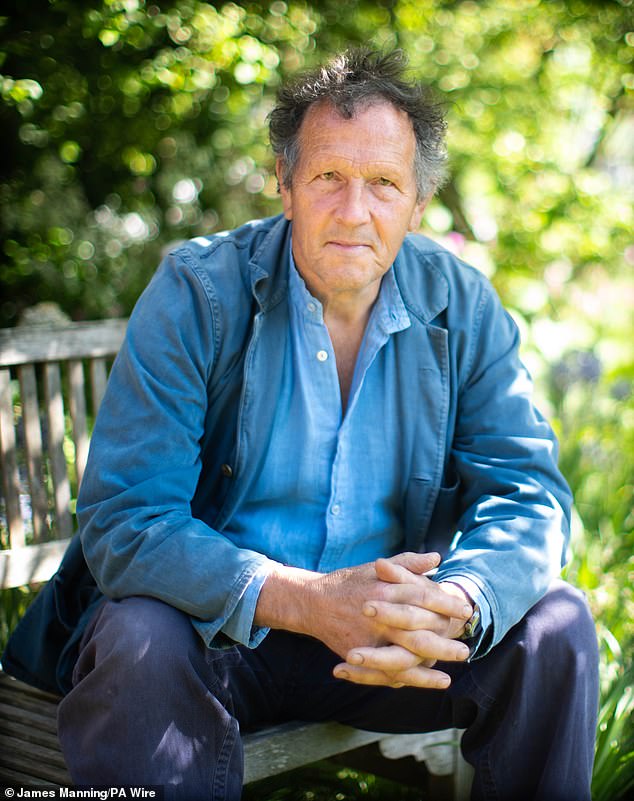
Horticulturalist and broadcaster Monty Don (pictured) has claimed that gardens do not need to contain plants
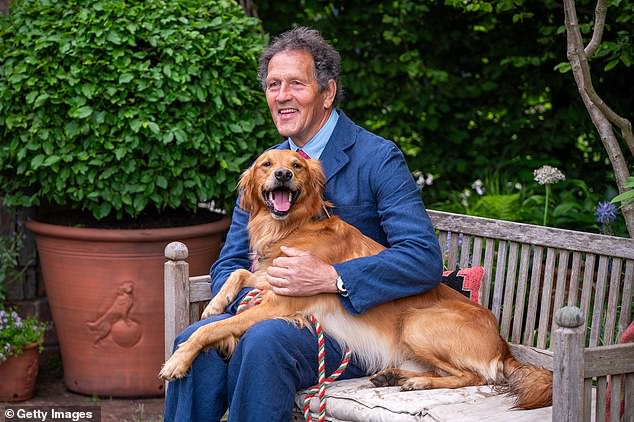
Writing in his column for Gardeners’ World, Monty, 70, highlighted that a number of the UK’s most celebrated gardens do not focus on plants
‘I have a garden happily filled to overflowing with plants. I love the physical process of raising and tending plants, but I also love visiting gardens that explore all the subconscious and spiritual possibilities that gardens can evoke and enrich.’
On the subject of plants, the horticulturalist has previously urged dog owners to be ‘sensible’ about the varieties which could harm their pets.
He made the comments earlier this year, as he prepared to unveil his dog-friendly garden at the Chelsea Flower Show.
Monty teamed up with the Royal Horticultural Society (RHS) for his first – and ‘I hope my last’ – garden at Chelsea filled with features for dogs including a lawn, water to wallow in and trees to cast shade.
Don defended the inclusion of plants that can be toxic to dogs in the garden, such as alliums and foxgloves, saying they were blooms he had alongside his pets without problems in his own garden.
The RHS and Radio 2 dog garden, which was not be judged, was to be relocated to nearby Battersea Dogs & Cats Home after the world-famous event at the Chelsea Hospital, west London.
Monty said they would remove any plants the charity did not want to have as part of the planting.
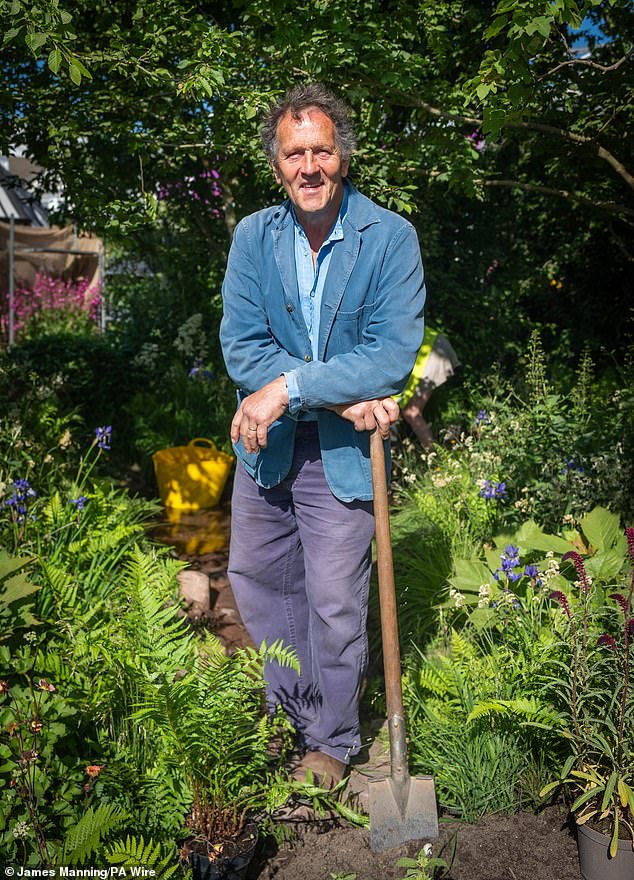
Monty Don poses in the RHS and BBC Radio 2 garden at the RHS Chelsea Flower Show, which opens at the Royal Hospital Chelsea in London next week
The horticulturalist, who has presented on Chelsea since 1990 and has covered the show for the BBC without a break for more than a decade, also said creating the garden had been a ‘humbling’ process that made him ‘hugely’ respect designers and makers of gardens at RHS Chelsea.
Speaking onsite, he said: ‘It doesn’t matter what kind of garden or how good or bad it is, it’s an almost unimaginable amount of work because of the detail you have to attend to.’
He added that he was looking forward to getting back to presenting coverage after his stint as a designer, which he described as ‘moonlighting’.
‘I now have real insight into the whole process. I didn’t know I needed that and I do, it’s humbling.’
Don, who was originally approached by the RHS to design a dog-friendly garden, said he did not want the project, created with horticulturalist Jamie Butterworth, to have any message except for being about dogs.
‘I wanted to see a garden at Chelsea that didn’t have a message, that didn’t set itself in an exotic situation, was absolutely set fair and square in 2025 in England and that was full of plants that either I did have or everybody could buy from their local garden centre, and with trees or shrubs that were native or long adapted to this country.’
The lawn was central to the plot, surrounded by planting which can create shifting paths for dogs to take around the garden, and a large open-fronted ‘dog house’ with an old sofa for the animals to retreat to.
The garden also featured long meadow grass for dogs to lie in, while Radio 2 presenter Jo Wiley suggested an area of water for dogs to wallow in, based on experience with her pets, Don said.
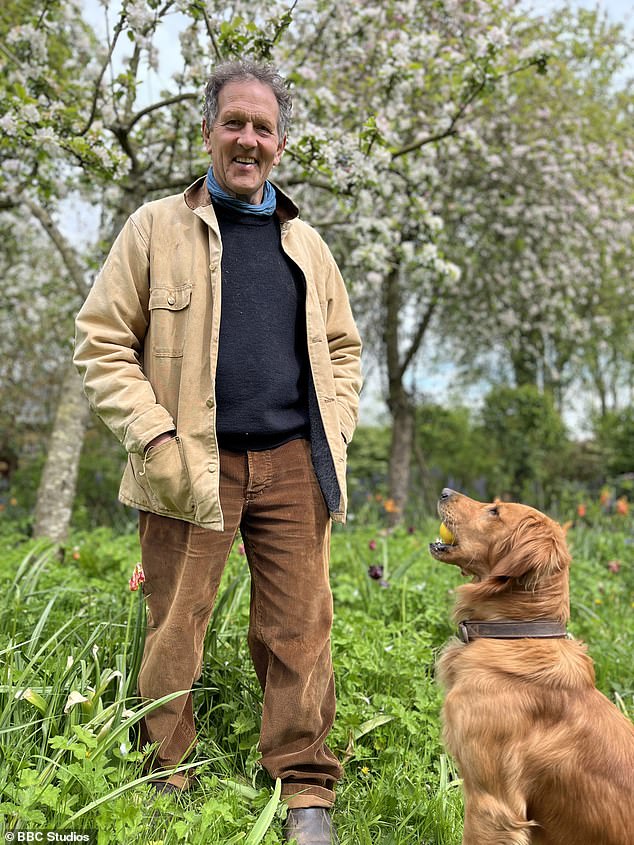
Don said he has used plants in the garden which he has at home with his own dogs
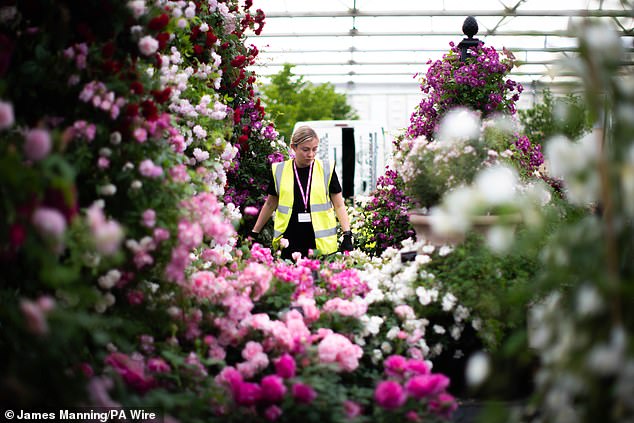
A worker makes finishing touches to a garden at the RHS Chelsea Flower Show, which opens at the Royal Hospital Chelsea in London next week
There was a playfulness to the garden, with use of dogwood, round-headed alliums evoking balls dogs love to play with, and terracotta pots have been created with pawprints of Don’s dog Ned who is regularly be seen following him around his garden on Gardeners’ World.
But while the lawn was created to look like it had been used by dogs and people, the team have stopped short of having holes dug in it or ‘pee rings’.
And Don said: ‘There are plants in the garden that are technically poisonous to dogs.
‘However, there are no plants that I don’t have in my own garden and I’ve always had dogs.
‘My view on this is actually the main plant I worry about is yew and we don’t have that in the garden.
‘In my experience dogs are sensible and owners are sensible.’
Don added: ‘We have a brief to make a beautiful garden for Chelsea. The only dogs that are going to be allowed on here are mine or others specifically invited and on a lead and under control.
‘When it goes to Battersea it will not have any plants Battersea doesn’t want to be there, we will remove any that they feel has any toxicity to their dogs,’ he said.
‘We’re not saying these are plants that are perfectly safe, what are you making a fuss about? What I am saying is in my experience I’ve not had any problems with these plants, and I’ve had dogs for the last 65 years.’
Many everyday activities from cutting with knives in the kitchen to driving a car or crossing the road were more dangerous than these plants were to dogs, he said.
And he added: ‘Just be sensible, don’t get hysterical, but at the same time don’t dismiss it.’
He also said dog owners who are keen gardeners should not expect a perfect lawn because ‘that’s not compatible with dogs’, and encouraged those who did not want their animals to be crashing through the flower beds to create low fences or hedging on borders or corners to stop them.
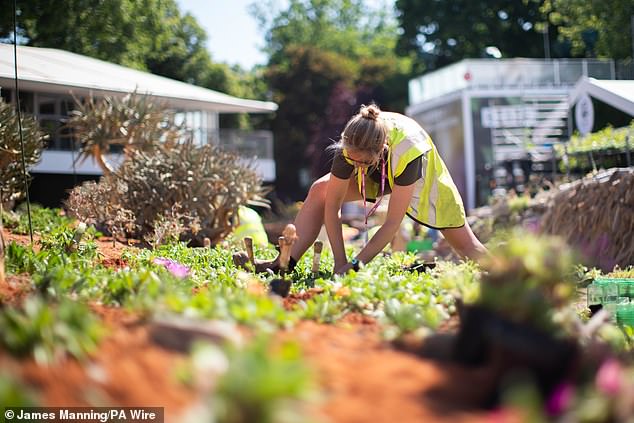
Workers have been busy tending to the gardens in recent weeks ready for thousands of visitors
An RHS spokesperson said the dog garden was ‘primarily designed to bring joy and delight’.
‘However, as RHS Chelsea is also a great place to inspire and educate, with some people perhaps not realising that a number of common garden plants could be harmful to dogs if eaten, the RHS and Monty are encouraging people to be aware, but also to be sensible, about dogs in their gardens at home.
‘The garden raises awareness to keep an eye on pets amongst plants. Don’t let them eat or dig up plants in borders and, as with anything, if you see them eating something in the garden and you see changes in behaviours or are worried or have doubts, call the vets.’
They added: ‘The garden will live on at Battersea, where experts from the charity will carefully select dog-friendly, non-toxic plants to live on where rescue dogs can enjoy them for years to come.’












